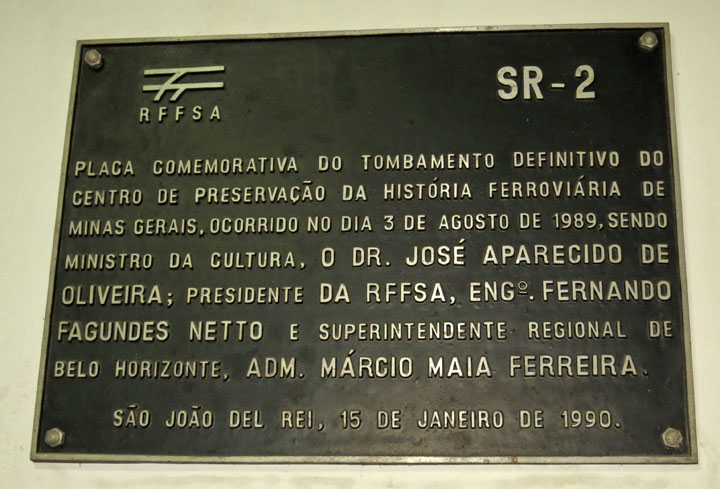

Estrada de Ferro Oeste de Minas
A section of the Estrada de Ferro Oeste de Minas narrow gauge railway from São João del Rei to Tiradentes has been preserved as a tourist line.
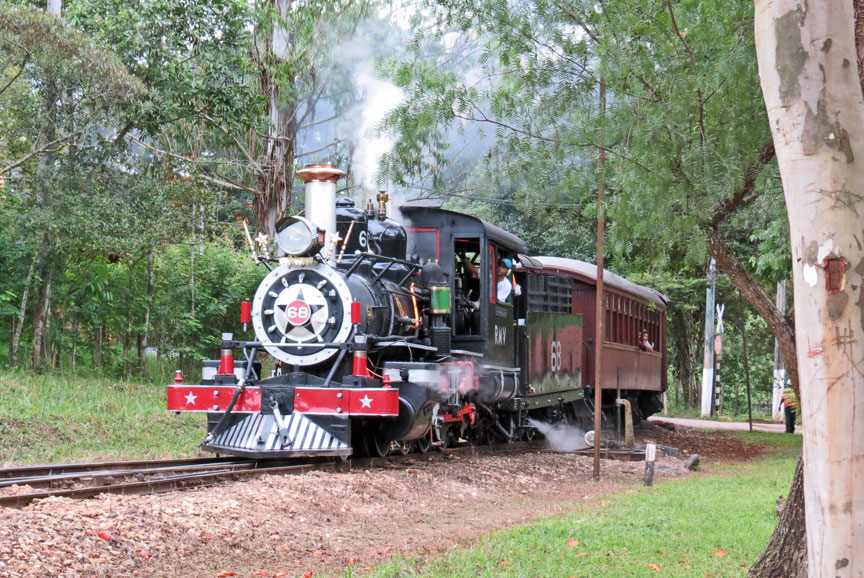
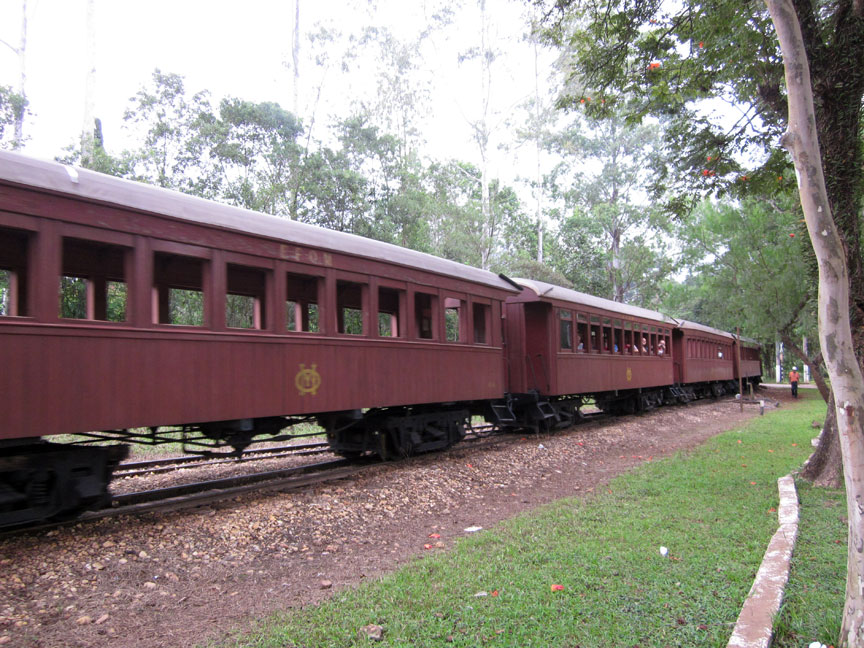
The Estrada de Ferro Oeste de Minas was a 2 ft 6 in (762 mm) narrow gauge railway located in the southeastern Brazilian state of Minas Gerais. At its peak the railway's route totalled 775 km (482 mi). A portion of the railway still operates as a heritage railway, and one of the major stations (São João del Rey) is now Brazil's largest railway museum.

5 ft 3 in (1,600 mm) (broad gauge) railways entered Minas Gerais in the 1870s,
pushing towards the city of Belo Horizonte. Almost immediately attention turned
to the construction of narrow gauge feeder lines. In 1872 Provincial President
Dr. Joaquim Floriano de Godoy signed into law approval for a narrow gauge
railway from the broad gauge line heading west towards a navigable point on the
Rio Grande. A subsequent law in 1877 limited the railway to initially building
only as far as São João del Rei. A company, the Comania Estrada de Ferro Oeste
de Minas, was established in 1878, and a decision was made to make the junction
with the broad gauge at Sitio (Antonio Carlos).


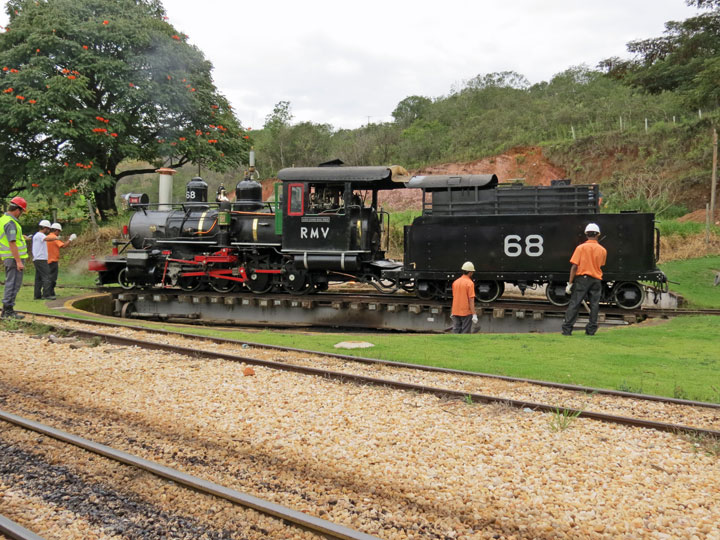
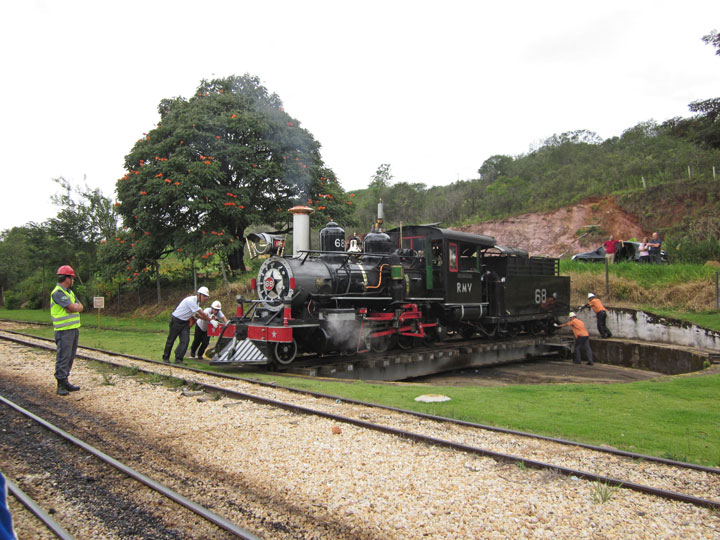
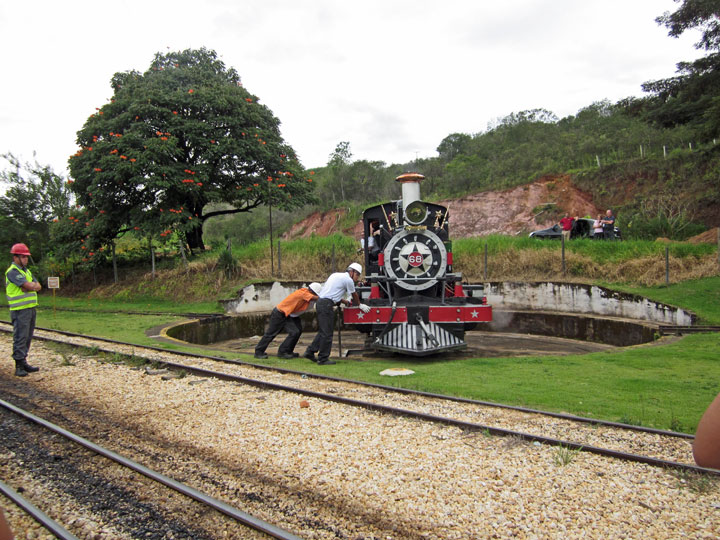
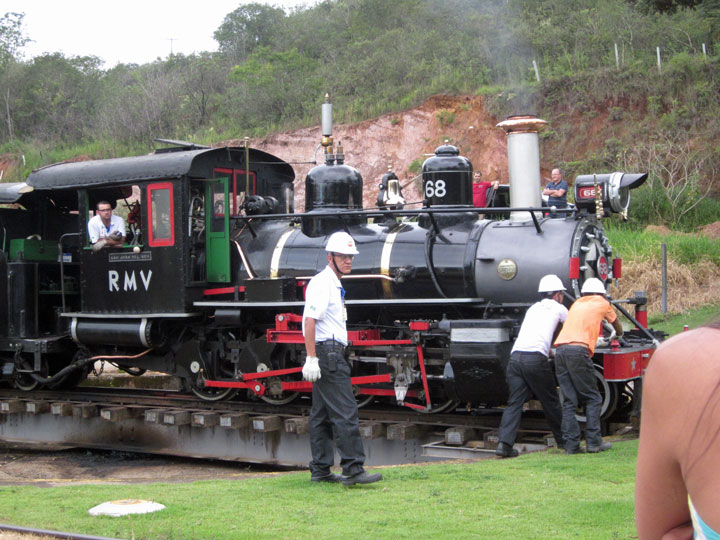
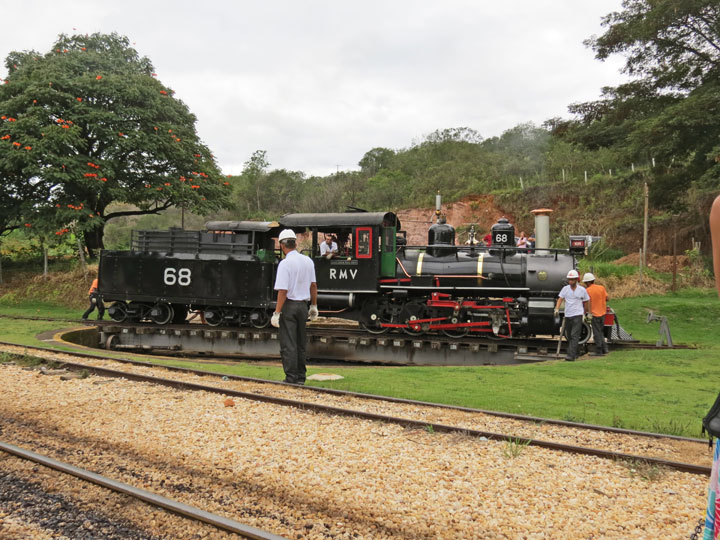
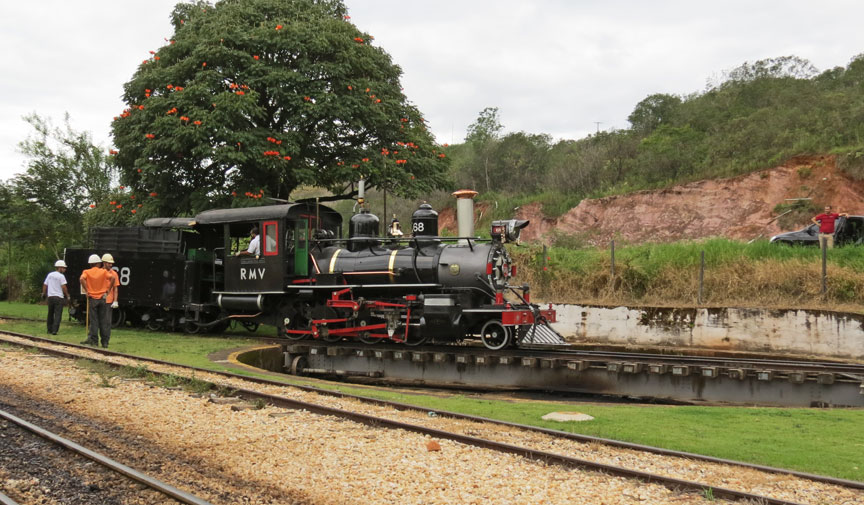
The gauge of 2 ft 6 in (762 mm) was chosen in 1879. The exact reason for the
choice of gauge is not known, one theory is that an American engineer was
familiar with the Ferrocarril de Antofagasta a Bolivia in Chile. In any case
construction was commenced in June 1879, with the first section of traffic
between Sitio and Barrosso in September 1880. The opening of the line through to
Sao Joao d'El-Rey was conducted on the 28 August 1881 by the Emperor Dom Pedro
II.

The company sought permission to extend the railway and over the subsequent 15
years built a number of extensions until it reached Paraopeba. Apart from a
small number of short branches, the railway was more or less complete by 1894.
During this time the line had been reasonably profitable, returning small
dividends. However in 1894 the railway barely broke even, and following years
brought losses. By April 1900 the company was in liquidation, and a month and a
half strike by employees was only halted when the State government paid their
back pay. The entire railway was placed up for auction on the 13 June 1903, the
purchaser being the Federal Treasury.

Several branches were constructed in the period up to 1923, but no extensions
after that date. Operation of the line was divested to the State government in
1931. In the meantime, 1,000 mm (3 ft 3 3⁄8 in) had been adopted as the primary
gauge for secondary lines in Brazil. Lines radiating to the west from Belo
Horzonte crossed the railway at Divinópolis and Velho Dataipa. By 1953 control
of the railway reverted to the Federal government. During the period 1960 to
1965 most of the railway was either closed or converted to meter gauge. Only the
section from Antonio Carlos to Aureliano Mourão was retained.
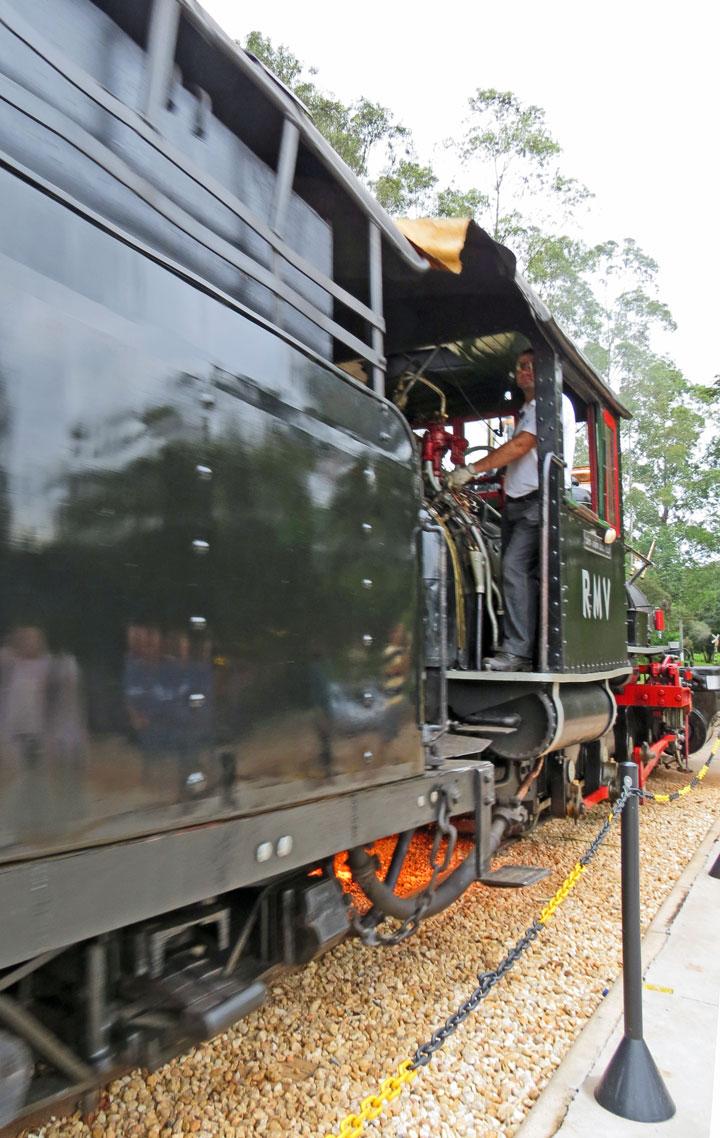
The first two locomotives purchased by the company were from the Baldwin Locomotive Works, and were described as being of the "Montesuma" type. They had a 4-4-0 wheel arrangement, and weighed about 13 tons plus tender. Further 4-4-0s followed, and as the railway grew also 4-6-0s and 2-8-0s. Some of the larger locomotives were up to about 25 tons in weight. Initially the locomotives used wood as a fuel, however later they were converted to oil.
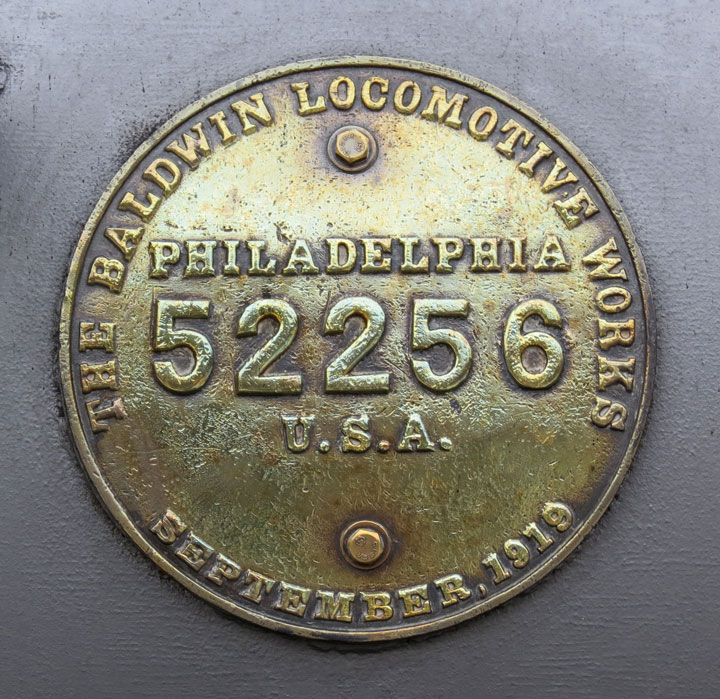
In all 58 locos were built for the railway. Baldwin built all but five, with
three being built by Alco, and two in the railways own workshops. These included
the last loco acquired by the railway, a 2-8-0 constructed in 1920. Records
indicate this loco was built for about half the cost of an imported loco, but
performed equally well.

16 locos survived to the final closure of the railway, and were subsequently
preserved, including locomotive number 1.
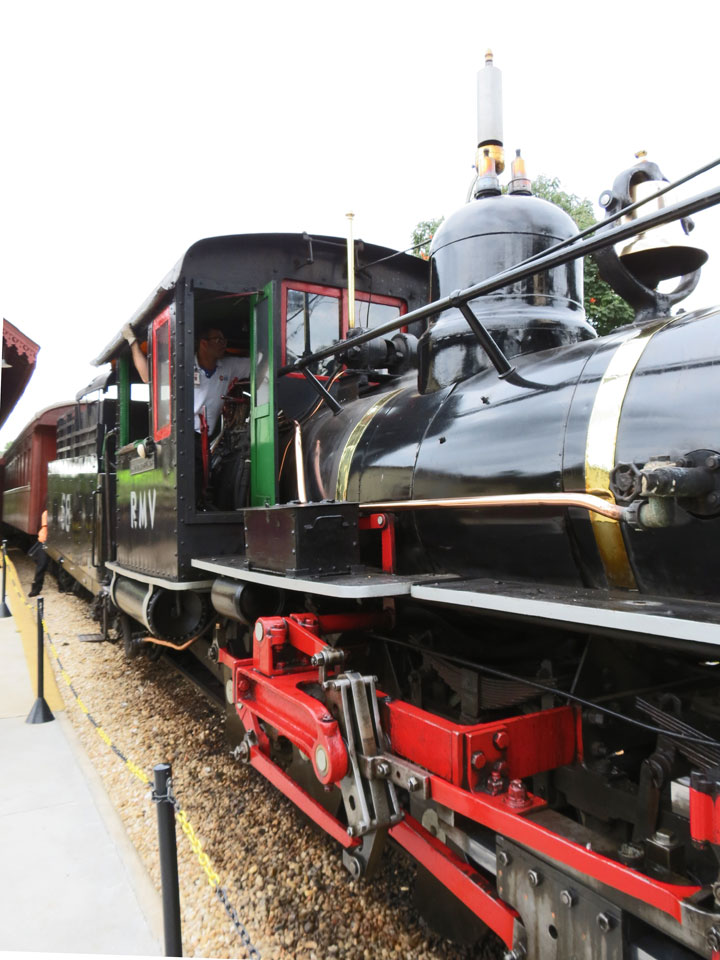
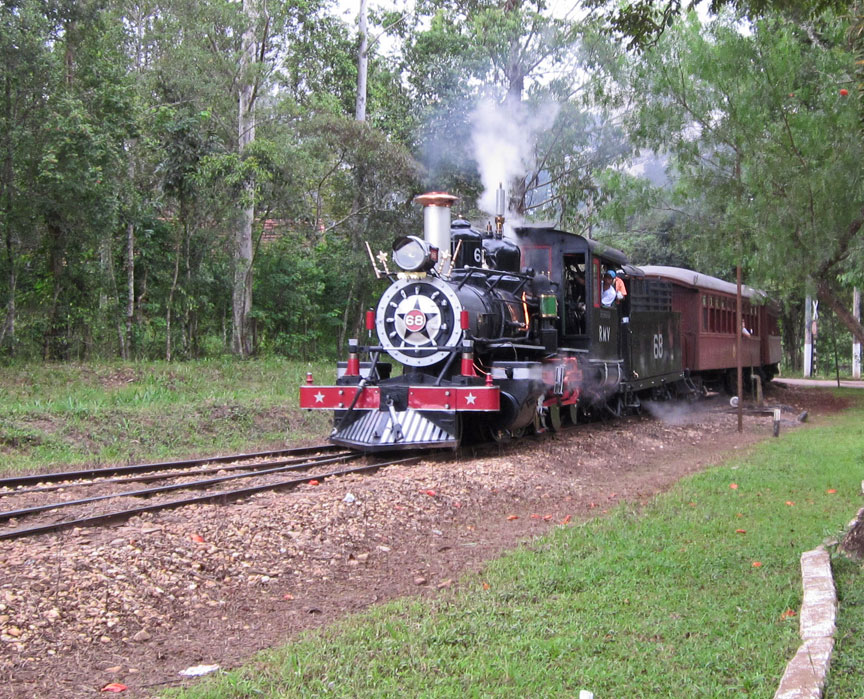
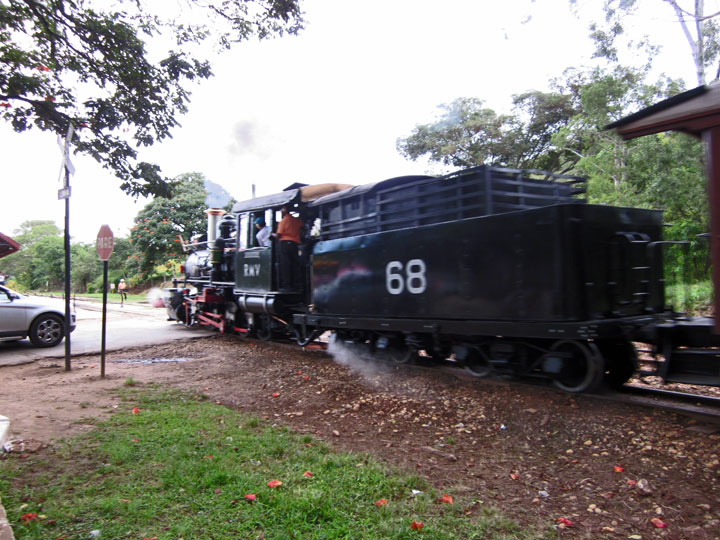
The Antonio Carlos line survived mainly on limestone traffic associated with a
cement plant. Passenger traffic declined to a single coach attached to a daily
mixed train. However as the 1970s progressed the line became more popular with
tourists, and passenger traffic grew dramatically. In 1983 the closure of the
cement plant brought the closure of the line, however the section from
Tiradentes to Sao João Del Rei was retained as a tourist line.
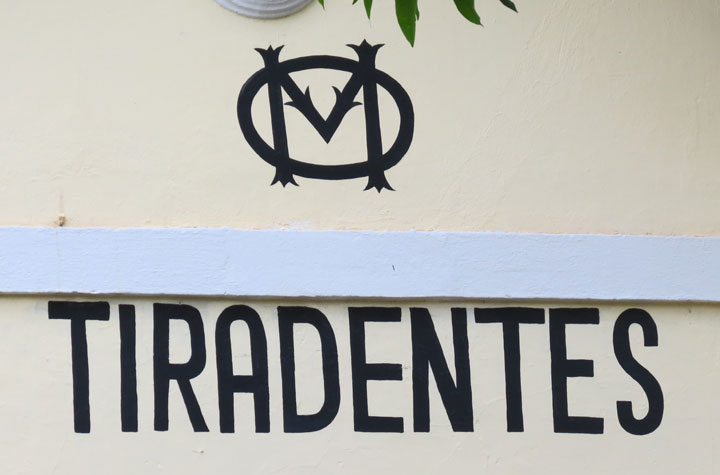
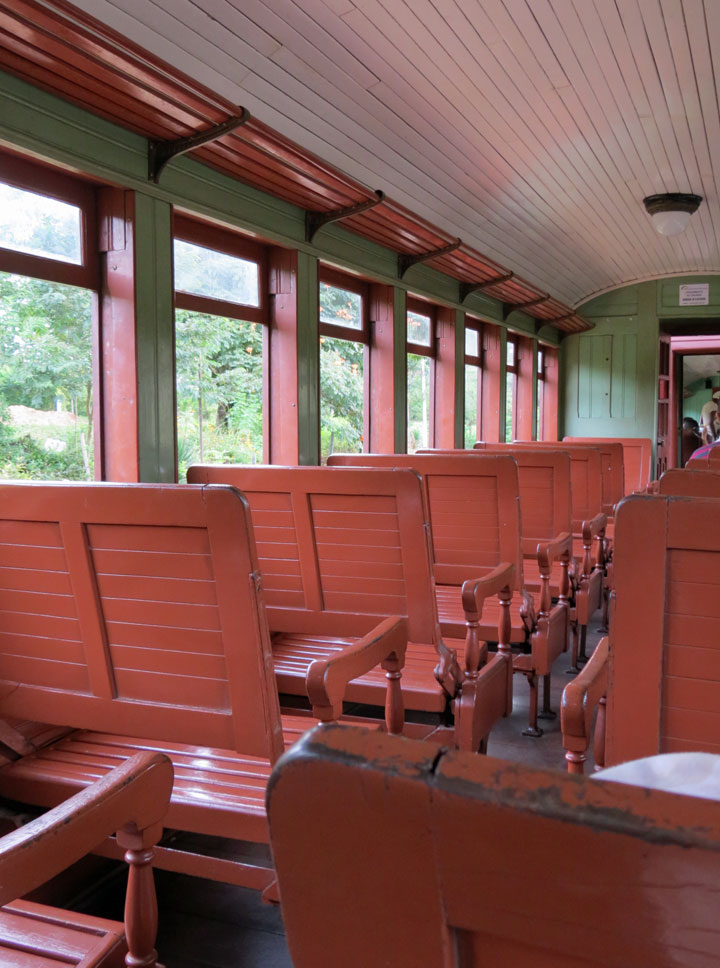
At the time of the final closure in 1983 the railway was attracting increasing numbers of tourists. A decision was made to turn the substantial station, workshops and roundhouse in São João del Rei into a railway museum. 14 locomotives, as well as the remaining rolling stock was brought to São João del Rei, together with a number of items of metre gauge equipment. The roundhouse had to be rebuilt after a fire in 1972. The new museum became the largest railway museum in Brazil, and was opened in August 1984.
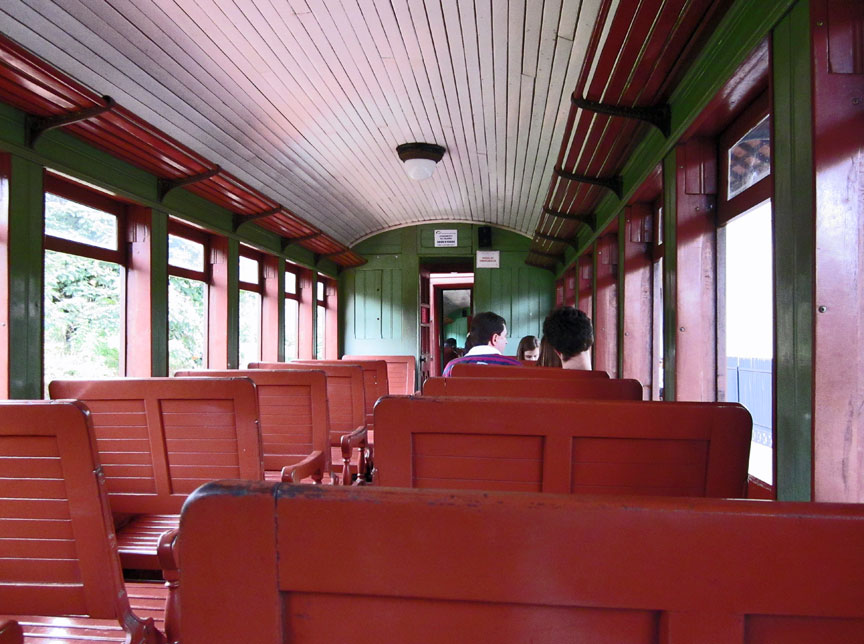
At the same time a 13 km stretch of track to Tiradentes was retained for the
tourist railway operation. Regular passenger trains are operated over this
stretch of track, using the original equipment of the railway. Trains are run on
Fridays, Saturdays, Sundays, and public holidays.
Text from Wikipedia
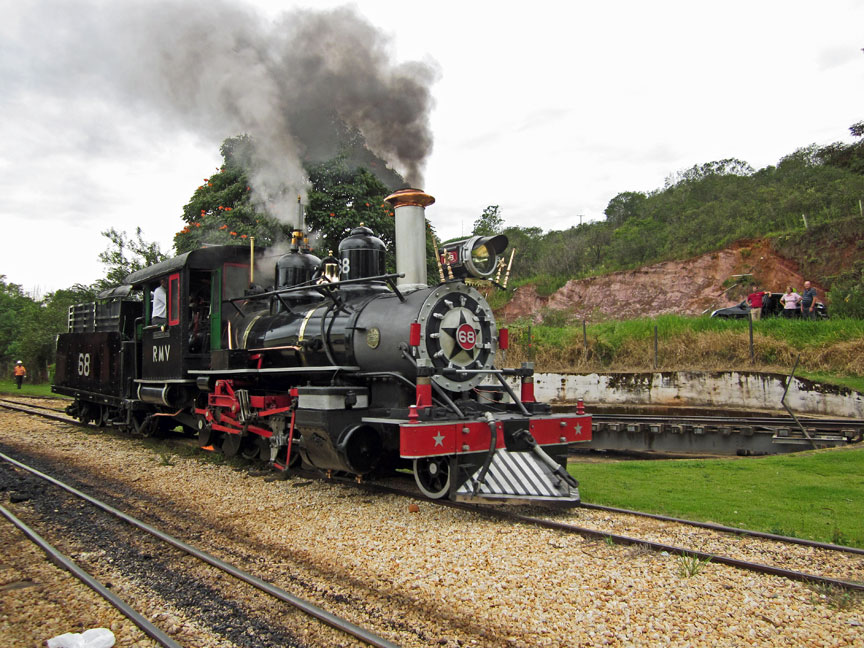
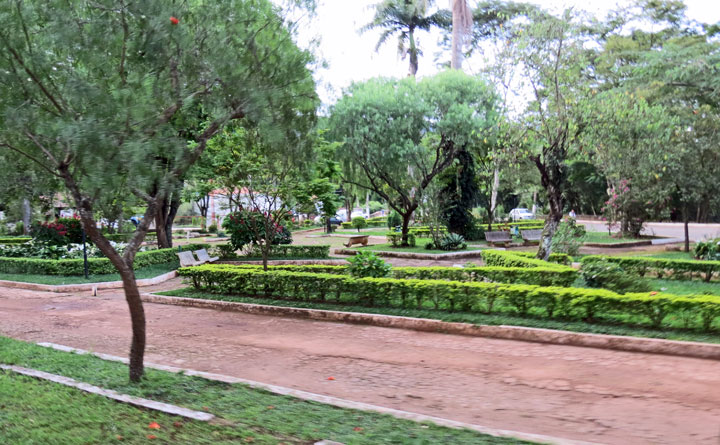
on the track to São João del Rei

playing football (succor)

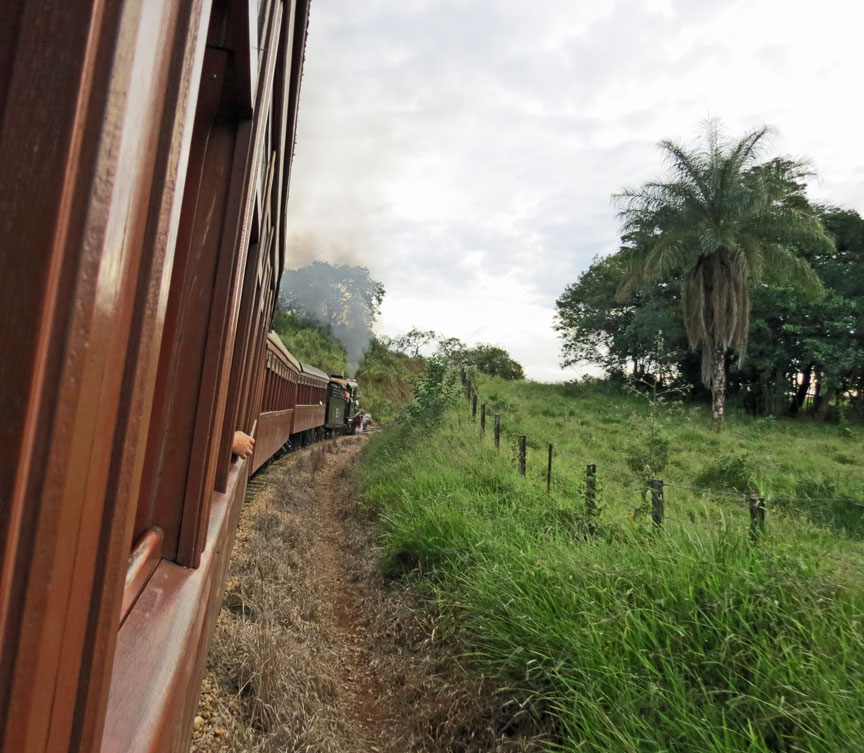
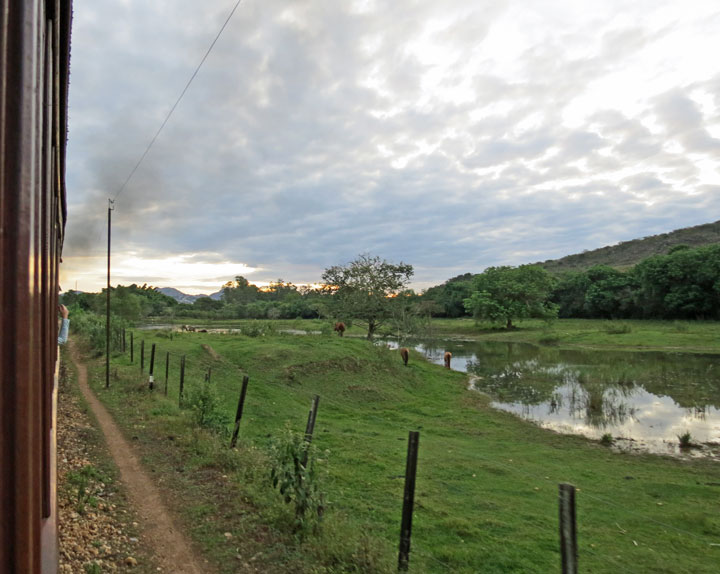
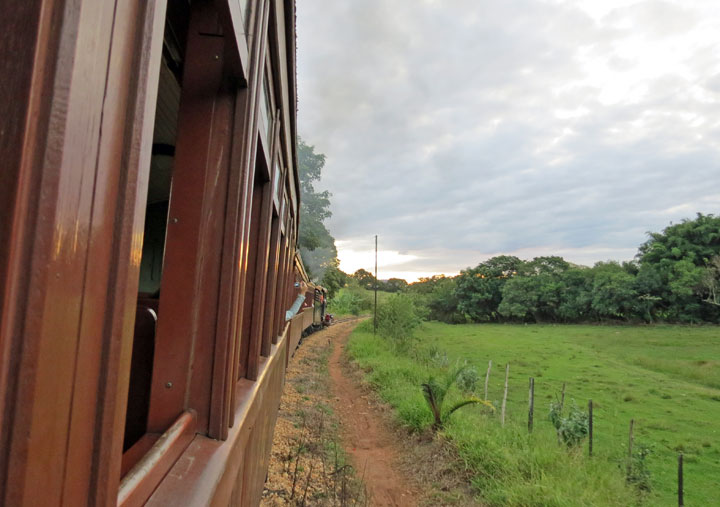
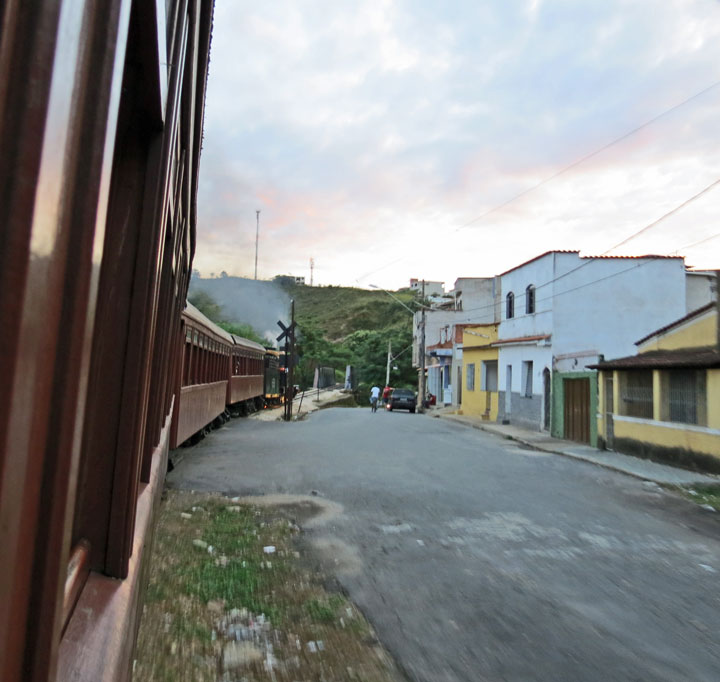
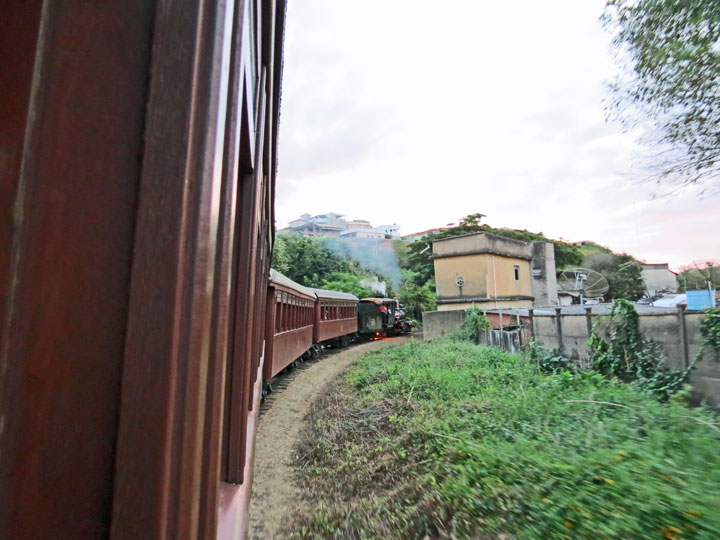
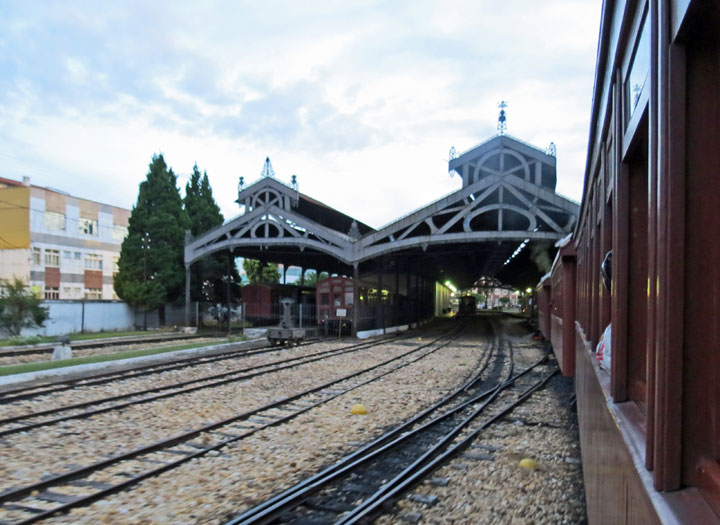
terminal in São João del Rei
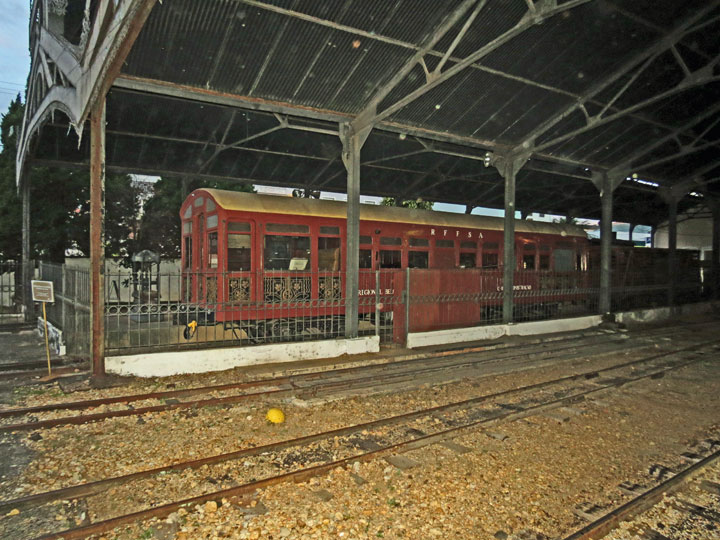
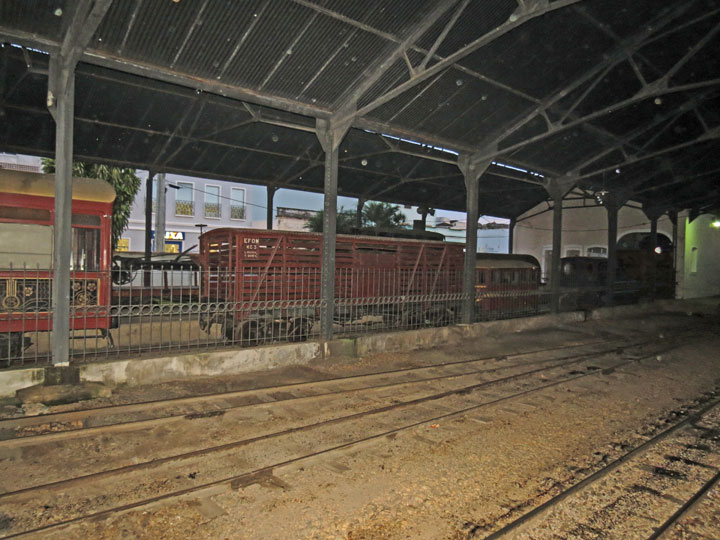
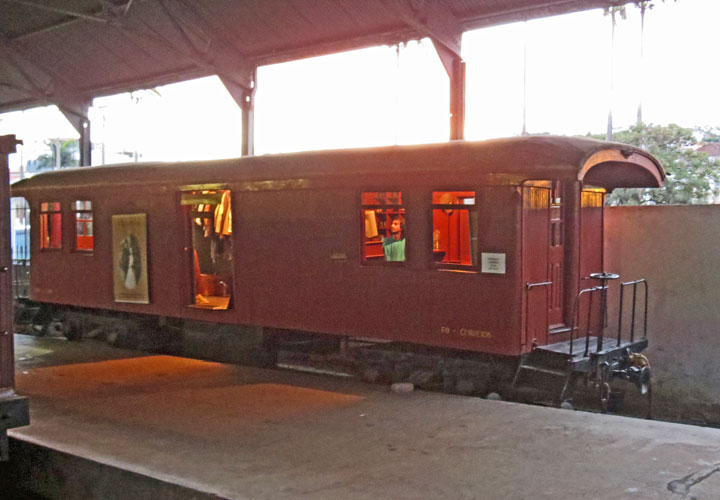

Ticket Office in Sao João Del Rei station
